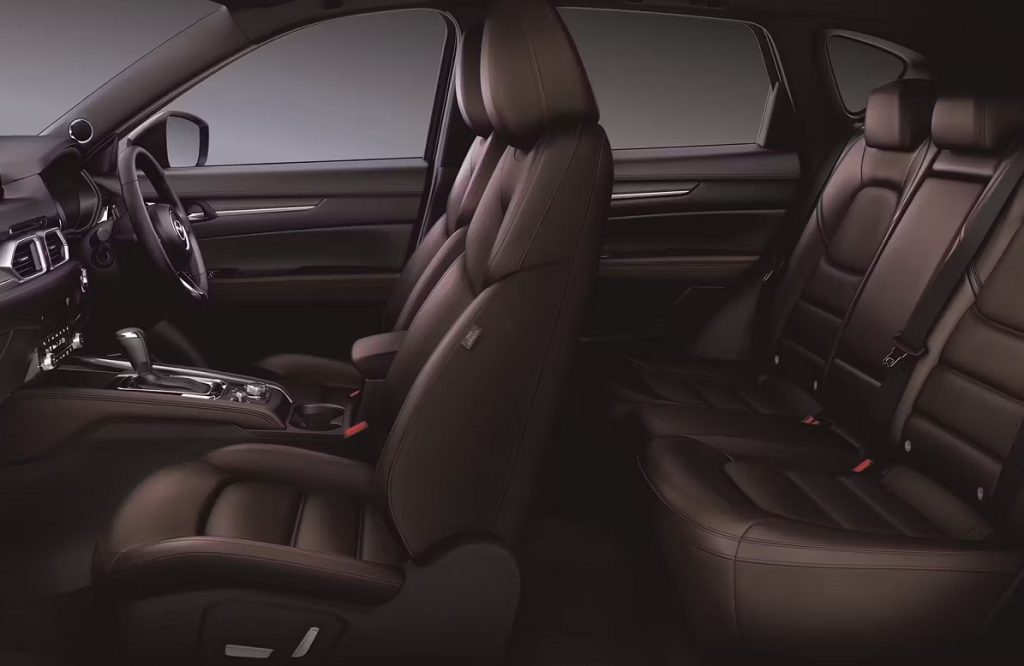In the realm of automotive luxury, few features are as synonymous with opulence and sophistication as leather trimmed seats. But what exactly distinguishes these seats from their counterparts? Let’s embark on a journey to uncover the intricacies and allure of leather trimmed seats, exploring their composition, quality, benefits, maintenance, and environmental impact.
Understanding Leather Trimmed Seats
1. Defining Leather Trimmed Seats: Leather trimmed seats, as the name suggests, are car seats that incorporate genuine leather in their design, typically on the seating surfaces. This luxurious material adds an element of refinement to the vehicle’s interior, elevating both its aesthetic appeal and tactile experience.
2. Composition of Leather Trimmed Seats: While leather is the primary material used in these seats, it’s essential to recognize that not all parts may be genuine leather. In many cases, manufacturers may use a combination of genuine leather and synthetic materials to achieve a balance of luxury, durability, and cost-effectiveness.
Deciphering the Quality of Leather Trim
1. Grades of Leather: Leather comes in various grades, each with its own set of characteristics and quality levels. Genuine leather, derived from animal hides, is prized for its natural beauty, durability, and luxurious feel. On the other hand, synthetic alternatives offer affordability and versatility but may lack the same level of elegance and longevity.
2. Characteristics of High-Quality Leather: Premium quality leather exhibits traits such as softness, suppleness, and a rich aroma. It ages gracefully, developing a unique patina over time that adds to its charm and character. Additionally, high-quality leather is more resistant to wear and tear, maintaining its integrity even after years of use.
Benefits of Leather Trimmed Seats
1. Luxurious Comfort: Perhaps the most significant advantage of leather trimmed seats is the unparalleled comfort they provide. The soft, supple texture of leather molds to the contours of your body, offering a plush and supportive seating experience, especially during long journeys.
2. Durability and Longevity: Contrary to common misconceptions, quality leather is exceptionally durable and resistant to damage. It can withstand everyday wear and tear, including spills, stains, and abrasions, without losing its aesthetic appeal or structural integrity. With proper care and maintenance, leather trimmed seats can retain their luxurious appearance for years to come.
3. Enhanced Resale Value: Vehicles equipped with leather trimmed seats often command higher resale values in the market. The premium interior finish adds perceived value to the car, making it more attractive to prospective buyers seeking luxury features and upscale aesthetics.
Maintenance Tips for Leather Trimmed Seats
1. Regular Cleaning and Conditioning: To preserve the pristine condition of leather trimmed seats, it’s crucial to clean and condition them regularly. Use a mild leather cleaner and conditioner to remove dirt, grime, and oils while replenishing the leather’s natural moisture and suppleness.
2. Protection from Sunlight and Heat: Prolonged exposure to sunlight and heat can accelerate the aging process of leather, causing it to fade, dry out, and crack prematurely. Whenever possible, park your vehicle in shaded areas or use sunshades to shield the seats from harmful UV rays and excessive heat.
3. Prompt Spill Cleanup: Accidental spills should be addressed promptly to prevent staining and damage to the leather. Blot the affected area with a clean cloth or paper towel to absorb excess liquid, then gently clean the surface with a damp cloth and mild soap. Avoid harsh chemicals or abrasive cleaners that can strip away the leather’s natural oils and finish. (See Also: How to Make a Headliner for an Old Truck – DIY Guide for Automotive Enthusiasts)
The Environmental Impact of Leather Trimmed Seats
1. Sustainable Alternatives: As environmental consciousness grows, automotive manufacturers are exploring sustainable alternatives to traditional leather. Vegan leather, derived from plant-based materials such as polyurethane or cork, offers a cruelty-free option without sacrificing style, comfort, or durability.
2. Eco-Friendly Production Practices: Some companies prioritize eco-friendly production practices, including responsible sourcing of materials, minimizing waste and emissions, and investing in renewable energy. By choosing vehicles with environmentally conscious interiors, consumers can reduce their carbon footprint and support sustainable innovation in the automotive industry.
Expert Tips for Leather Trimmed Seats: Enhance Your Driving Experience
Leather trimmed seats not only add a touch of elegance to your vehicle but also require proper care to maintain their luxurious appearance and comfort. Here are some expert tips to help you preserve the beauty and longevity of your leather trimmed seats:
1. Invest in Quality Leather Care Products:
Invest in high-quality leather cleaners and conditioners specifically formulated for automotive use. These products are designed to clean and moisturize leather without causing damage or discoloration.
2. Regularly Condition the Leather:
Leather can dry out over time, leading to cracks and a dull appearance. Regularly conditioning your leather trimmed seats helps replenish moisture, keeping them soft and supple.
3. Avoid Harsh Chemicals and Abrasive Cleaners:
Avoid using harsh chemicals or abrasive cleaners on your leather seats, as these can strip away the natural oils and finish of the leather. Opt for gentle, pH-balanced cleaners instead.
4. Protect Against UV Damage:
Prolonged exposure to sunlight can cause leather to fade and deteriorate. Park your vehicle in shaded areas whenever possible, and use window shades or tinting to protect your leather seats from harmful UV rays.
5. Address Spills Promptly:
Spills can leave stains and damage on leather seats if not cleaned promptly. Blot spills with a clean cloth and mild soap as soon as they occur to prevent permanent staining.
6. Use Leather Protectants for Added Durability:
Consider applying a leather protectant or sealant to your seats to provide an extra layer of protection against spills and stains. These products can help repel liquids and keep your seats looking new for longer.
7. Rotate and Adjust Seating Position Regularly:
To prevent uneven wear on your seats, rotate and adjust your seating position regularly. This helps distribute weight evenly across the seat surfaces and reduces the risk of premature aging. (See Also: What Color Car Interior Is Best? Unveiling the Top Choices for Automotive Elegance)
8. Keep Pets and Sharp Objects Away:
Pets and sharp objects can cause scratches and tears on leather seats. Keep pets restrained during car rides, and avoid placing sharp objects on the seats to prevent damage.
9. Schedule Professional Cleaning and Conditioning:
Schedule regular appointments with a professional detailing service to deep clean and condition your leather seats. Professional treatments can help remove stubborn stains and rejuvenate the appearance of your seats.
10. Enjoy the Luxury of Leather Trimmed Seats:
Finally, take the time to appreciate the luxury and comfort that leather trimmed seats provide. Sit back, relax, and enjoy the refined ambiance of your vehicle’s interior as you embark on your journeys. With proper care and maintenance, your leather seats will continue to enhance your driving experience for years to come.
Frequently Asked Questions About Leather Trimmed Seats
As luxurious as they are, leather trimmed seats often come with questions regarding their care, durability, and maintenance. Here are some common queries and their answers to help you better understand and care for your leather seats:
1. Are leather trimmed seats durable?
Yes, leather trimmed seats are generally durable and can withstand everyday wear and tear. However, proper care and maintenance are essential to ensure their longevity.
2. How should I clean my leather trimmed seats?
Use a mild leather cleaner and a soft cloth to gently wipe down your seats. Avoid harsh chemicals or abrasive cleaners, as these can damage the leather. Always follow the manufacturer’s recommendations for cleaning and conditioning.
3. Can leather trimmed seats be repaired if damaged?
Yes, minor damage such as scratches or small tears can often be repaired by a professional leather technician. However, extensive damage may require replacement of the affected panels.
4. How do I prevent my leather trimmed seats from cracking?
Regularly conditioning your leather seats helps prevent them from drying out and cracking. Additionally, avoid exposing your seats to direct sunlight for prolonged periods, as UV rays can accelerate the aging process of leather.
5. Are there any eco-friendly alternatives to traditional leather?
Yes, there are eco-friendly alternatives to traditional leather, such as vegan leather made from plant-based materials like cork or polyurethane. These alternatives offer a cruelty-free option without sacrificing style or quality. (See Also: How Much Does It Cost to Replace a Headliner? Your Comprehensive Guide to Headliner Replacement Costs)
6. Can I install seat covers over my leather trimmed seats?
While it’s possible to install seat covers over leather trimmed seats, it’s essential to choose covers specifically designed for use with leather. Improperly fitted or low-quality seat covers can trap moisture and lead to damage or discoloration of the leather.
7. How often should I condition my leather trimmed seats?
The frequency of conditioning depends on factors such as usage and climate. As a general rule, aim to condition your leather seats every 3-6 months or as needed to maintain their softness and suppleness.
8. Can I use household cleaners on my leather trimmed seats?
It’s best to avoid using household cleaners on leather seats, as they may contain harsh chemicals that can damage the leather. Stick to products specifically formulated for automotive leather to ensure the best results and preserve the integrity of your seats.
9. Will leather trimmed seats fade over time?
Leather trimmed seats may experience some fading over time, especially if exposed to direct sunlight. To minimize fading, park your vehicle in shaded areas whenever possible and use window shades or tinting to block out UV rays.
10. Do leather trimmed seats require special care in cold weather?
In cold weather, leather may become stiff and less pliable. To prevent cracking, avoid sitting on cold leather seats until they have warmed up, and consider using a leather conditioner with added moisturizers to keep the leather soft and supple in low temperatures.
Conclusion
In conclusion, leather trimmed seats represent the epitome of luxury, comfort, and craftsmanship in the automotive world. Understanding the nuances of leather quality, maintenance, and environmental impact empowers consumers to make informed choices when selecting car interiors. Whether you prefer the timeless elegance of genuine leather or the eco-consciousness of sustainable alternatives, leather trimmed seats continue to captivate enthusiasts with their timeless allure and enduring appeal.
Incorporate these insights into your next car purchase and experience the unmatched comfort and prestige of leather trimmed seats firsthand.



